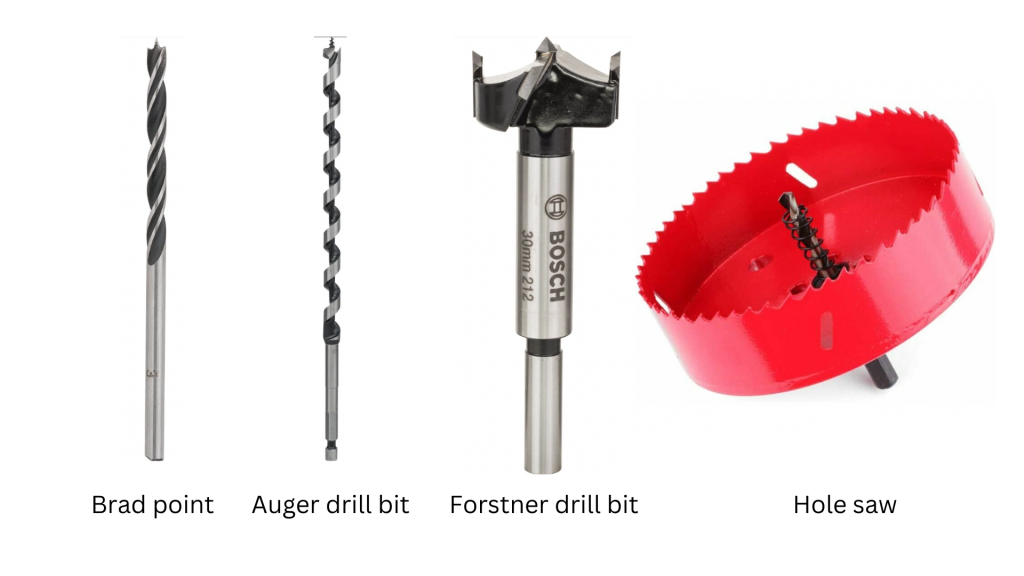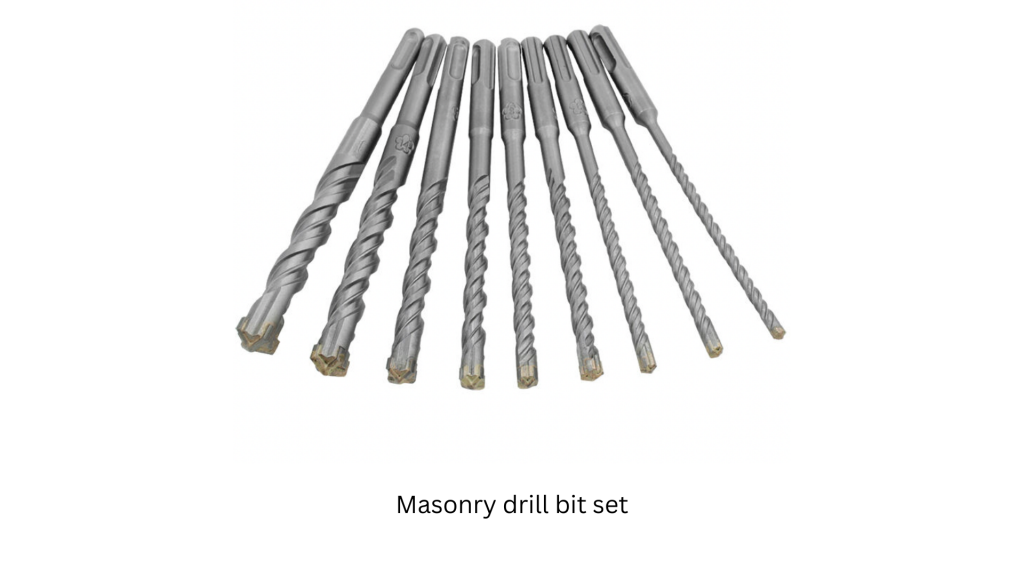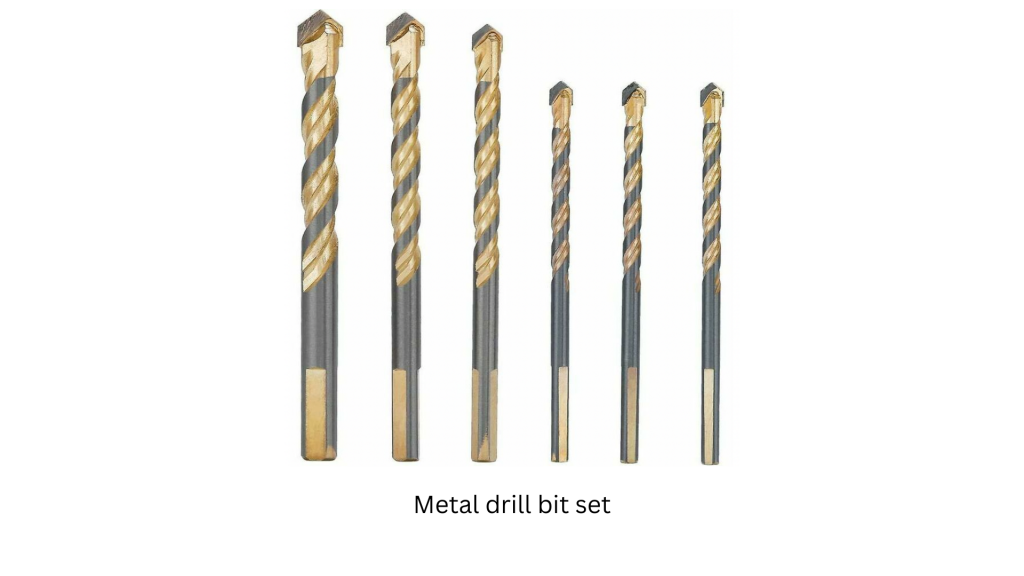Who has never experienced drilling? Next to screwing, it is the most common DIY activity. Whether you want to anchor to a wall, assemble furniture without screws or make a hole for a kitchen tap, it is almost always a matter of one thing – drilling the exact hole. All you need is the right drill bit and a few tricks. We have several for you.
Before you buy a drill bit, first clarify what material you want to drill and what you want to drill it with (that is, what machine you have at your disposal). We usually distinguish between drill bits for wood, metal, masonry and concrete, combination drill bits and various special drill bits.
Wood drill bits
To gain a better understanding of wood drill bits, it’s important to familiarise oneself with the most commonly used types. These include:

- Brad point wood drill bit: Brad point wood drill is a reliable and effective tool for woodworking. Its sharp brad point ensures quick and clean cutting for precise and accurate holes. Consider adding it to your toolkit for professional-level drilling results.
- Auger drill bit: Auger drill bits are the best option for drilling wood. They effortlessly pull into the wood, making them user-friendly and reliable for any woodworking project.
- Spade (flat) drill bit: Use a spade bit for fast and efficient rough hole drilling in wood. It’s excellent for hidden or covered areas, DIY projects, and professional jobs that require speed.
- Step drill bit: Step drill bits can drill through wood, acrylic, plastics, and metal. They work best on thin materials like sheet metal, making them ideal for precision tasks such as creating holes for wiring or plumbing fixtures. Choose the appropriate size and design for the material you’ll be working with.
- Self-feeding drill bit: Count on Reed Self-Feed Bits for reliable drilling of large-diameter holes through wood studs and floors. Our lead screws make drilling effortless and precise.
- Countersink bit: Countersink bits are commonly used to achieve a flush screw seat in wood. But other ways exist to hide screw heads and make surfaces look better.
- Forstner bit: Use Forstner bits for precise and clean holes with less tear-out for woodworking. They’re the best choice for drilling through wood.
- Hole saw: When a standard drill won’t do, a hole saw can help. It creates clean holes without damaging the material, saving time and effort. It’s also more efficient and accurate than a drill bit, perfect for those who value precision and speed. Use a hole saw for your next project and quickly finish the job.
Masonry drill bits
To develop a comprehensive grasp of masonry drill bits, it’s essential to acquaint oneself with the prevailing varieties frequently employed. These encompass:

- Masonry drill bit: Choose masonry drill bits for drilling hard materials like blocks, stones, bricks, or concrete. Using the correct tool and technique is crucial for optimal results.
- Chisel for hammer drill: SDS drills are the perfect choice for challenging drilling tasks. Their incredible power allows them to quickly drill through dense materials like steel, brick, masonry, and concrete. They are incredibly versatile and helpful for a wide range of applications.
Metal drill bits

Twist drills are reliable and effective for creating small holes in soft steel or sheet metal. They’re made of high-speed steel, cobalt, or carbide for durability and precision. Ideal for DIY or professional projects.
What is the difference between HSS and SDS drill bits?
The most significant contrast lies in how they are fastened within the drill. HSS bits can be used with any standard chuck, secured by three jaws that grip around the circular shank. These bits are perfect for softer wood, plastic, and aluminium. On the other hand, SDS bits have a specialized shank designed to fit into an SDS chuck, which features a spring-loaded mechanism that locks the bit into place. If you need to drill into more rigid materials like concrete or masonry, SDS bits are the way to go.
How do you know what drill bit is needed?
To understand the distinctions between an HSS drill bit and an SDS drill bit, it is crucial first to acknowledge how these bits are secured within a drill. HSS drill bits possess a circular shank that can be utilised with any standard chuck. Upon insertion of the shank into the drill, three jaws tighten around the shank to effectively secure the bit. This method of attachment is a significant contrast to SDS drill bits. It should be carefully considered when determining which drill bit is most suitable for your project.
What is the strongest drill bit?
When drilling through hardened steel, it’s essential to have the right tools on hand. The most effective option is the carbide drill bit due to its exceptional strength and durability. Carbide bits can quickly and efficiently drill through hardened steel, making them the top choice for professionals and DIY enthusiasts. However, if carbide bits are unavailable, alternative options like titanium and cobalt drill bits can be considered. Although these substitutes can drill through hardened steel, they may require more time and effort. Therefore, patience and persistence will be necessary when using these alternatives.
What is and what does SDS mean on a drill bit?
SDS bits are strong and can endure spinning. There are two types: SDS and SDS-Plus. SDS-Plus bits are sturdier and longer, making them better for demanding projects. They can also be used with SDS chuck systems for more versatility.
Summary
Explore the finest selection of drill bits from the UK’s premier suppliers with Buildiro. Our platform is designed for easy comparison of prices and placing orders with utmost convenience. Our partners offer swift click-and-collect or next-day delivery options to make the process even more effortless. Now is the time to discover our extensive range of drill bits and upgrade your toolkit with the perfect additions. Start exploring today!
Leave a Reply